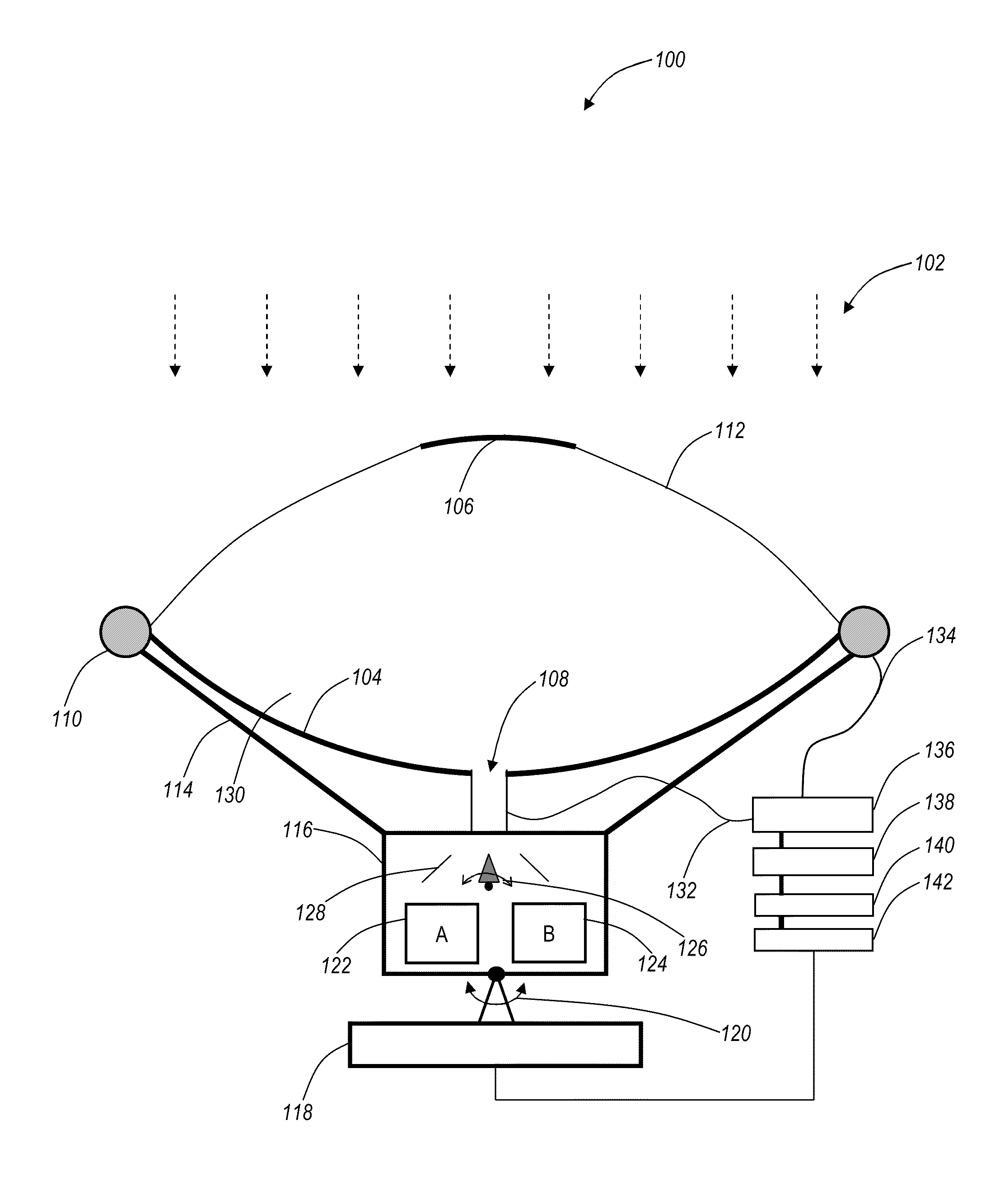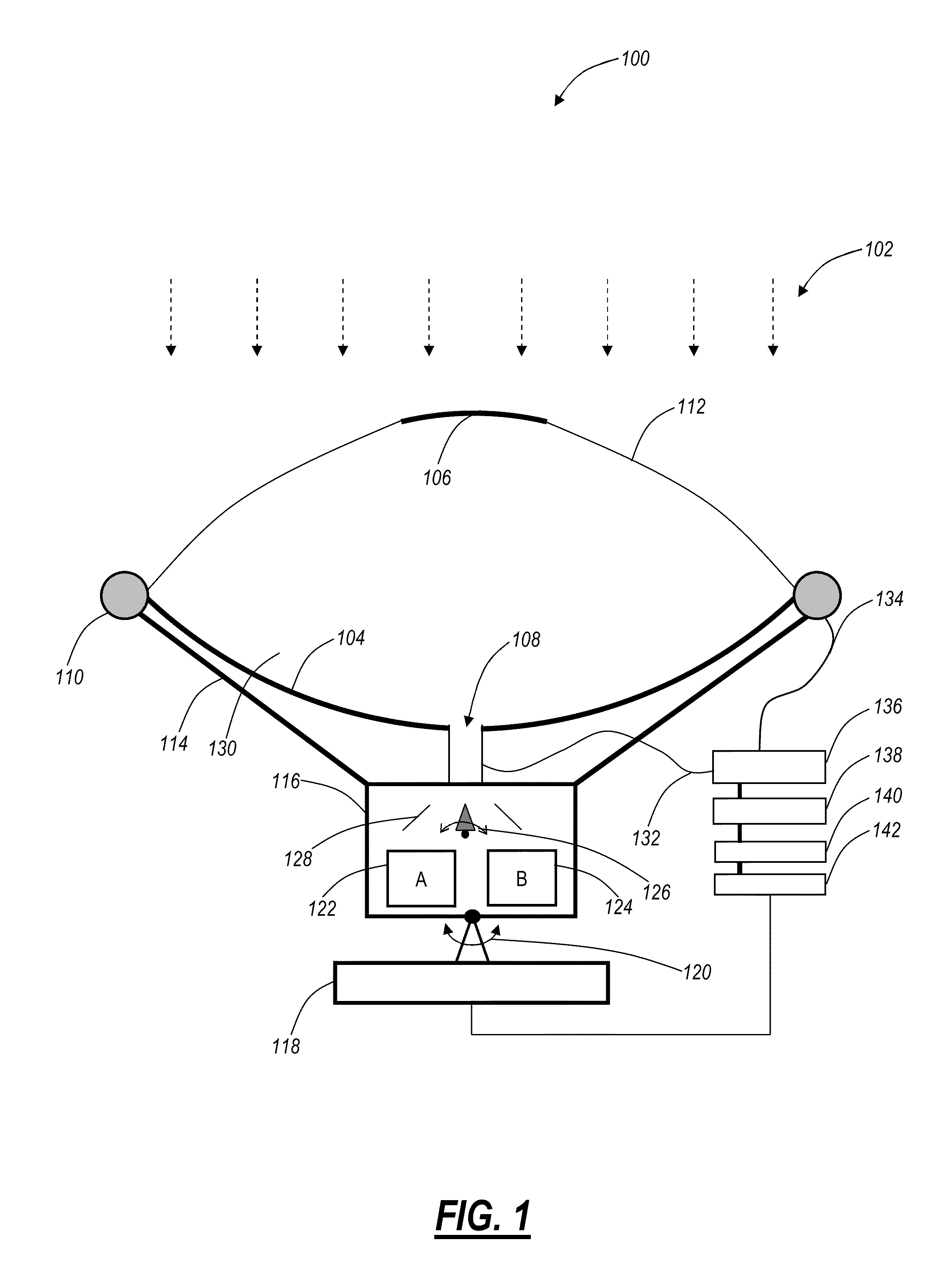Systems and methods for collecting solar energy for conversion to electrical energy
a technology of solar energy and electrical energy, applied in the field of solar energy, can solve the problems of affecting the cost and conversion efficiency of electrical energy, the price per watt has leveled, and the cost of manufacturing is high
- Summary
- Abstract
- Description
- Claims
- Application Information
AI Technical Summary
Benefits of technology
Problems solved by technology
Method used
Image
Examples
Embodiment Construction
[0020]In various exemplary embodiments, the present invention provides systems and methods for collecting and converting solar energy into electrical energy. The present invention includes solar collectors that concentrate solar energy and mechanisms for transporting and transferring the concentrated solar energy directly into closed cycle thermodynamic engines without heating the outside surface of the engines. Additionally, the present invention includes multiple thermodynamic engines and mechanisms to direct solar energy into each of the thermodynamic engines to increase overall system efficiency by maximizing the use of collected solar energy. Advantageously, the delivery system of the present invention avoids heating an outside surface of the engine as is done in conventional designs, provides a closed design to protect the collectors, and maximizes efficiency through multiple engines and optical splitters.
[0021]Referring to FIG. 1, a dual-surface reflector 100 is illustrated f...
PUM
 Login to View More
Login to View More Abstract
Description
Claims
Application Information
 Login to View More
Login to View More - R&D
- Intellectual Property
- Life Sciences
- Materials
- Tech Scout
- Unparalleled Data Quality
- Higher Quality Content
- 60% Fewer Hallucinations
Browse by: Latest US Patents, China's latest patents, Technical Efficacy Thesaurus, Application Domain, Technology Topic, Popular Technical Reports.
© 2025 PatSnap. All rights reserved.Legal|Privacy policy|Modern Slavery Act Transparency Statement|Sitemap|About US| Contact US: help@patsnap.com



